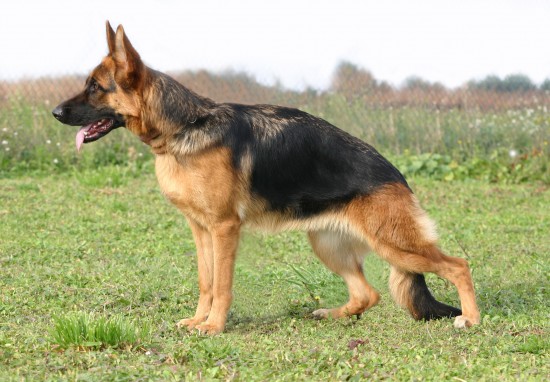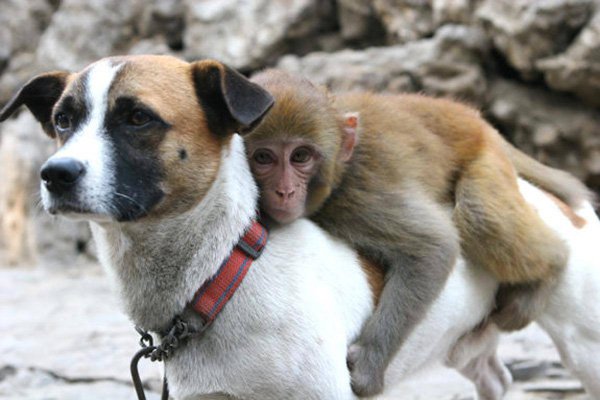

There are quite a few bull breed dogs around which includes the Staffordshire Bull Terrier amongst others. Some of these dogs have earned themselves a bit of a bad reputation with certain breeds now being banned in many countries including the UK as a result.
A lot of the "Bull" breeds are prone to suffer from certain health conditions some of which are genetic whereas other are acquired. These disorders are worth knowing about especially if you are thinking about sharing your home with one of these dogs. The earlier a health issue is detected, the better the outcome tends to be. On top of this, the sooner your dog is treated the quicker they are made more comfortable.
Below is a list of conditions commonly seen in the Bull breeds which if caught early enough are that much easier for vets to treat.
This is a skin condition that's caused by mites that live in a dog's hair follicles. If left untreated the infestation just gets worse and worse. However, the condition can also be connected to a dog's immune system which means they may be suffering from some other form of health issue that's triggered the condition.
Signs your dog may be suffering from mange include the following:
If you suspect your dog has mange, you need to get them along to the vet as soon as you can so they can be correctly diagnosed and treated. A vet would need to take skin samples to establish if it is indeed mange but it is a very easy procedure because the mites can be seen under a microscope.
However, mange can sometimes be a tricky condition to treat and vets normally like to use a topical medication to begin with. This has has to be applied to a dog's skin as needed. If however, mange has really taken hold, you might need to give your dog a weekly bath using a veterinary prescribed medicated shampoo.
Mange is a nasty condition that's easily transmitted between dogs. In short, you should never leave this condition untreated
Bull breeds also tend to suffer from ligament damage more especially around their knee joints. It's thought this is an hereditary disorder that's passed down to puppies from their parents, but it can be due to normal wear and tear on the ligaments too.
Signs to watch out when a dogs may be suffering from a damaged ligament includes the following:
If you are at all concerned your dog has a damaged ligament, you would need to get them along to see a vet as soon as you can for them to be thoroughly examined. A dog with this condition would need to be put on immediate rest until the results of an X-ray can be examined. If necessary, dogs might need to undergo surgery to correct the problem and would therefore need to be hospitalised.
Bull breeds are also quite susceptible to ear infections because all too often their inner ear canals are a lot narrower than in other breeds which means they don't drain as well. These narrower ear canals also provide the ideal breeding ground for many bacteria which is another reason "bulls" often suffer from ear issues.
There are some pretty obvious signs to watch out for when a dog has an ear infection which includes a rather nasty smell coming from affected ears. Other signs include the following;
It's always best to seek veterinary advice if your dog develops an ear infection because if caught early enough, they are so much easier to treat. Naturally, this makes life a lot more comfortable for dogs too which is essential to their well-being.
Vets normally prescribe ear drops which are a very effective at getting rid of ear mites. However, if the infection is really bad, the vet might need to sedate your dog in order to thoroughly clean their ears which they typically do by flushing them with a specific ear medication.
 How To Feed Your Dog A Diet That Produces A Low Waste Output
How To Feed Your
How To Feed Your Dog A Diet That Produces A Low Waste Output
How To Feed Your
 Top Tips On Keeping Aquarium Fish For Beginners
Top Tips On Keepi
Top Tips On Keeping Aquarium Fish For Beginners
Top Tips On Keepi
 Health Issues Commonly Seen In German Shepherds
Health Issues Com
Health Issues Commonly Seen In German Shepherds
Health Issues Com
 Cat and Dog Boarding Winnipeg - For Better Care and Grooming
Cat and Dog Boarding Winnipeg - For Better Care and Groomi
Cat and Dog Boarding Winnipeg - For Better Care and Grooming
Cat and Dog Boarding Winnipeg - For Better Care and Groomi
 Pet Friendly Community in Dubai
Pet Friendly Community in Dubai
Notwithstandin
Pet Friendly Community in Dubai
Pet Friendly Community in Dubai
Notwithstandin
Copyright © 2005-2016 Pet Information All Rights Reserved
Contact us: www162date@outlook.com